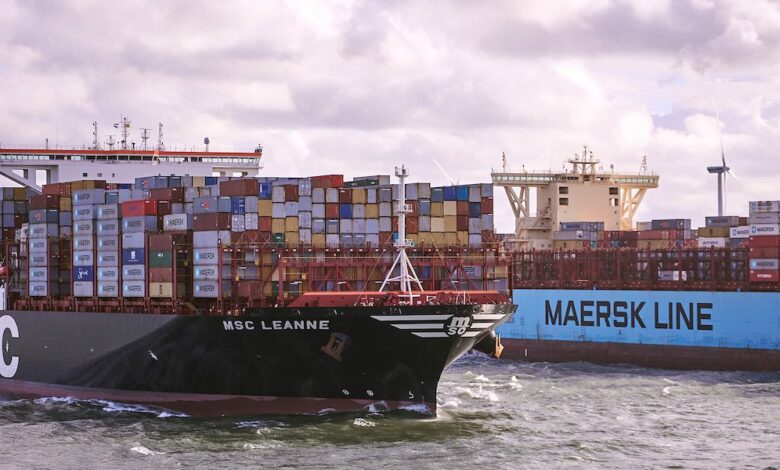Blanked sailings now ‘part of normal shipping business life’

Blanked sailings have become “part of normal shipping business life” on key east-west container tradelanes, suggests Alphaliner in its latest weekly report. However, other experts question just how much is actually blanked.
Alphaliner data shows in June and July, 10.8% of all regular sailings out of the 25 Central China — Europe loops offered by the three big alliances were voided. Sea-Intelligence data shows transpacific blanked sailings have been ticking up in July and August also.
According to consultants Drewry, scheduled sailings have dropped for the month of August, while blanked capacity has increased. Throughout the month just 573 sailings are scheduled across the mainlines after netting out blank sailings. This is down from the range of 600-650 net sailings during the April-July period, and is marginally up from the January low point of 545 sailings.
“Limiting capacity should remove some pressure on spot freight rates,” Alphaliner argued while experts at online box platform Freightos stated: “Peak season volumes have increased moderately alongside increases in blanked sailings.” Splash has been reporting on the changed spot fortunes for carriers in recent weeks, ending more than a year of declining rates.
“Considering the recent rise in rates, we can expect that strict capacity management will continue, meaning blanked sailings are probably here until demand returns. There are already suggestions that another general rate increase may be incoming in the next month,” stated an update yesterday from Atlantic Pacific Global Logistics.
“At least with alliances, a reasonable option for rerouting will often exist so the impact in terms of delays will likely only be a few days. Supply chains just then need to buffer the inventory to allow for that until better forecasting and closer collaboration exists,” commented Andy Lane, a partner at Singapore’s CTI Consultancy.
Year-on-year, the transpacific proforma capacity has gone down in the January to September period by 13% to 20.6m teu, according to data from Danish platform eeSea, which in a recent post then added caveats to these numbers.
“Proforma capacity (= if announced services run as planned, with weekly calls) never equals actual deployed capacity. You have delays, blank sailings, omissions and just general vessel deployment changes, which means that in normal years some 10-15% of proforma capacity ‘falls through the cracks’. Some of this lost capacity is indeed announced as blanks by the carriers – but far from all of it is,” eeSea explained.
Analysts at eeSea pointed out that in the January to September period last year, 25% of proforma transpacific capacity was lost equating to 6.1m teu thanks to strikes and bottlenecks, so effective deployed capacity was only 17.5m teu.
In 2023 that number is 3.5m teu of lost capacity amounting to 17%, so effective deployed capacity is 17.1m teu or only a 2.4% drop compared to 2022, according to eeSea data.
“Long story short: it’s easy to push a narrative about aggressive capacity withdrawals; but do make sure you understand the underlying numbers, before you make a strategic decision,” eeSea concluded.
